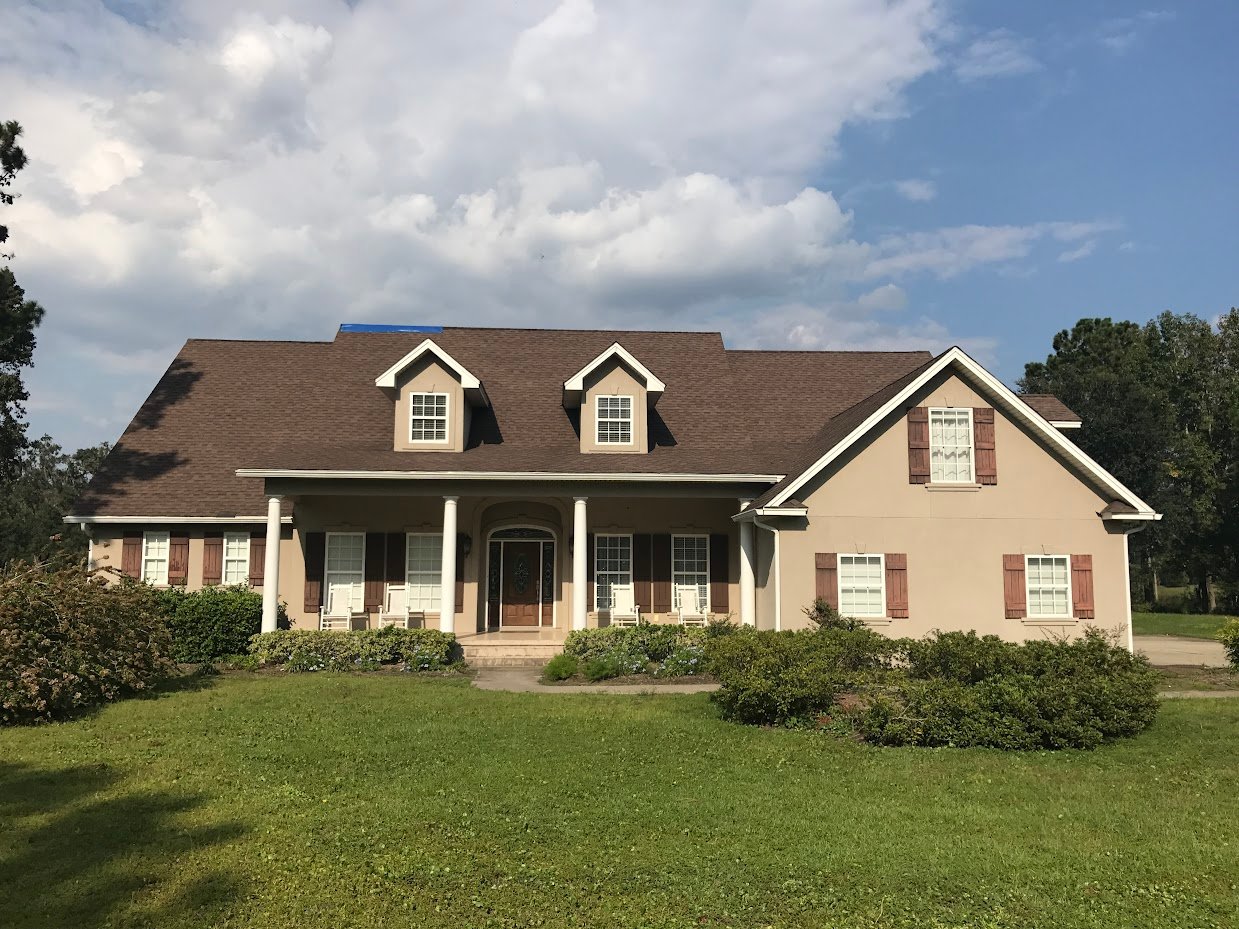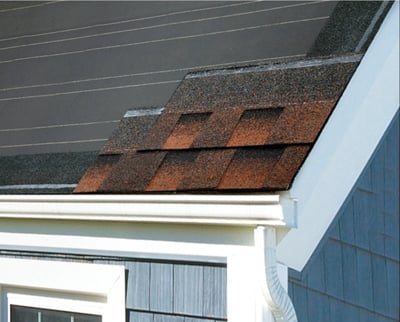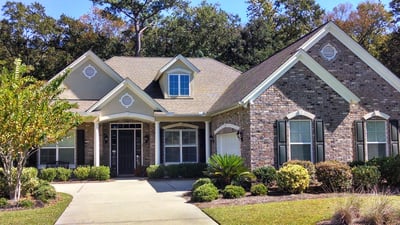
Did you know drip edges can be crucial for your roofing system? If you weren't aware, think about this: water tends to accumulate on your roof when it rains. Without a device directing the water away from the roof, damage to the fascia and shingles may begin.
We're talking about water damage, wood rot, and other issues that could affect the livelihood of your home. To put it into perspective, when mold is given the chance to run rampant, more than just your roof will be at risk. Besides the lifespan of your roof decreasing, other parts of the home may fall victim to deterioration and health risks. Not to mention, mold is unsightly, persistent, and will attract rodents.
That doesn't sound fun, does it? Luckily, drip edges come in handy to help counteract these problems.
Here at RoofCrafters, we've repaired homes that lack proper drip edge flashing for almost thirty years, and we've seen mold and wood rot that affects not only the roof but the structural integrity of the entire home. If you're curious to know about the significance of this once-overlooked roof protection component, you've come to the right place.
This article discusses the what, why, and how of drip edge flashing to give you an idea of why it's vital for your roofing system. By the time you're finished reading, you'll have expert-level knowledge of this roofing material. Let's get started!
What Is Drip Edge?

Drip edge flashing is a critical component for any roofing system, particularly for those concerned with roof durability and water management. This type of metal flashing is installed along the edges of the roof to protect the underlying structure and facilitate water drainage. Commonly crafted from metal, such as aluminum, galvanized steel, or copper, drip edges are also available in materials like vinyl, fiberglass, and durable plastic.
Why Is Drip Edge Flashing Important?
Drip edge flashing is essential for maintaining the integrity of your roof and preventing issues like wood rot and leaks. It directs rainwater away from the fascia and into the gutter system, protecting your home from potential damage. Without a proper drip edge, water can seep into the roof structure, leading to serious complications over time, such as moisture buildup and structural damage.

Pest prevention is another crucial benefit of drip edge flashing. It seals the gap between the roof deck and fascia, keeping out insects and small animals like squirrels, rodents, and bats. This helps in maintaining a pest-free home.
Protecting Your Home from Rain: The Role of Drip Edge Flashing
In areas with heavy rainfall, drip edge flashing plays a pivotal role in safeguarding your home from rainwater damage. Directing rainwater into the gutters, it prevents water from seeping between the roofing material and the fascia boards, which can lead to deterioration and potential structural damage. A well-installed drip edge is a barrier that keeps your roofing system and home’s structure intact by preventing water infiltration and rot.
What Types of Drip Edge Are Available?
There are many accessible styles of drip edge flashing. However, three are considered more standard. Each goes by at least one name, which can be confusing, but we've made sure to list their variations. Listed below are the popular options, along with their name variations:
There are many accessible styles of drip edge flashing. However, three are considered more standard. Each goes by at least one name, which can be confusing, but we've made sure to list their variations. Listed below are the popular options, along with their name variations:- Type C (L-shaped): Also known as "L-style", this is the standard drip edge, bent at a 90-degree angle, and is commonly seen on many roofs.
- Type D (T-shaped): Often referred to as "D-metal" or "T-style", this drip edge is preferred by the Asphalt Roofing Manufacturers Association for its effectiveness.
- Type F (Gutter apron): Known for its extended top edge, this type is ideal for adding a drip edge to an existing roof, providing an easier installation process over shingles.

All types of drip edges must meet building codes, requiring them to be corrosion-resistant, galvanized, and non-porous. Popular choices include aluminum, galvanized steel, and copper, with copper being the most premium option.
Keep in mind that all drip edges must be resistant to corrosion, galvanized, and non-porous under the building code. This ensures that you get high-quality materials, regardless of which ones you pick. Commonly recommended choices are drip edges made of aluminum, galvanized steel, or copper. Aluminum and steel are more affordable, while copper is on the pricey side.
Cost of Drip Edge Flashing

If you choose one made of steel, it should be galvanized to prevent rust. Since this material is lightweight, it's recommended to choose a minimum of 24-gauge steel. Galvanized steel drip edge costs $3 to $10 per 10 linear feet, depending on your desired style.
Another choice, aluminum, is not quite as strong as steel. Aluminum is the best option when thinking of rust prevention, though, especially for homes in coastal areas. An aluminum drip edge also costs $3 to $10 per 10 linear feet, depending on what style you potentially choose.
Finally, you can choose from "the grandfather of all metals," copper. It gives the roof a unique look and should be a minimum of 0.69 mm, or 20 ounces. Copper drip edge is more expensive, costing $35 to $75 per 10 linear feet, depending on which style you choose.
Is Drip Edge Flashing A Requirement?
According to the International Residential Code (IRC), drip edges are now mandatory for all asphalt roof installations. While this wasn't a requirement before 2012, the increasing recognition of its importance in roof water drainage has made it a critical component in modern roofing practices.
Ensuring Comprehensive Roof Protection with Drip Edge Flashing
All in all, drip edge flashing is an indispensable component for any roofing system, offering significant protection against water damage and pest infiltration. By effectively directing rainwater away from the fascia and into the gutters, drip edges help maintain the structural integrity of your home.
This small but vital feature can prevent extensive damage to the roof and underlying structures, ultimately saving homeowners from costly repairs and ensuring long-term durability. Not to mention, it also plays a crucial role in enhancing the overall aesthetic and functional value of the roof. Available in various materials and styles, such as aluminum, galvanized steel, and copper, drip edges can be tailored to match the specific needs and preferences of any homeowner.
Whether you prioritize cost-effectiveness or premium quality, there is a drip edge option suitable for every roofing project. If you’re ready to up the ante on your home’s first line of defense, be sure to hit the “Schedule an Inspection” button down below!
My name is Kevin Mills, and I am the lead estimator for RoofCrafters’ Tampa division. I’m originally from Michigan, and I enjoy hunting, fishing, and spending any free time outdoors. What I’m most passionate about, though, is helping business owners and homeowners alike achieve their roofing goals, all while providing a seamless customer journey.




